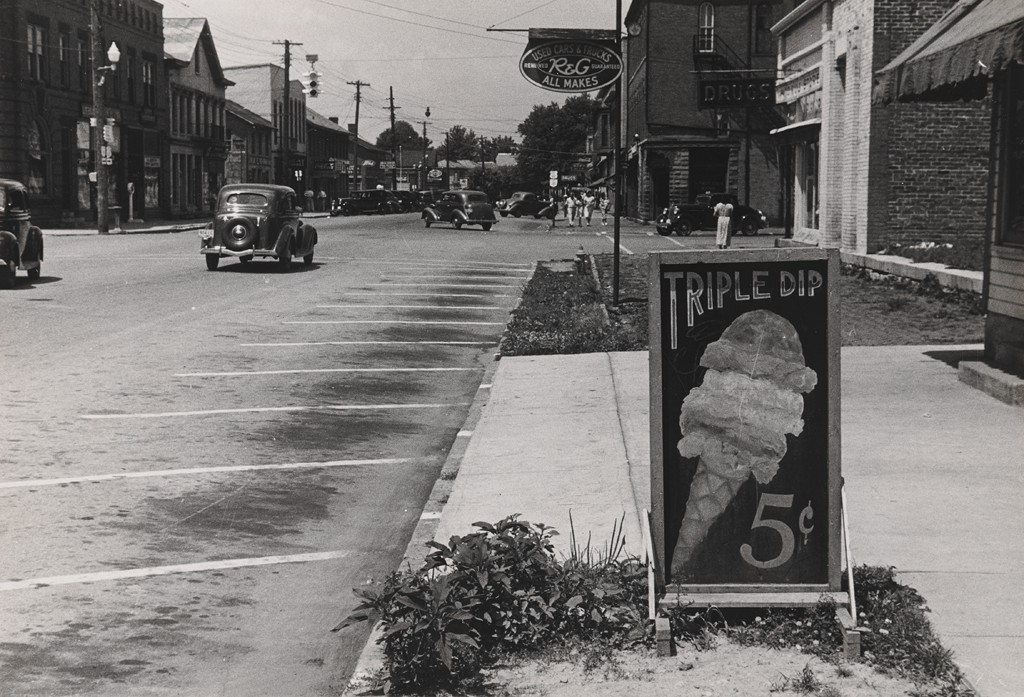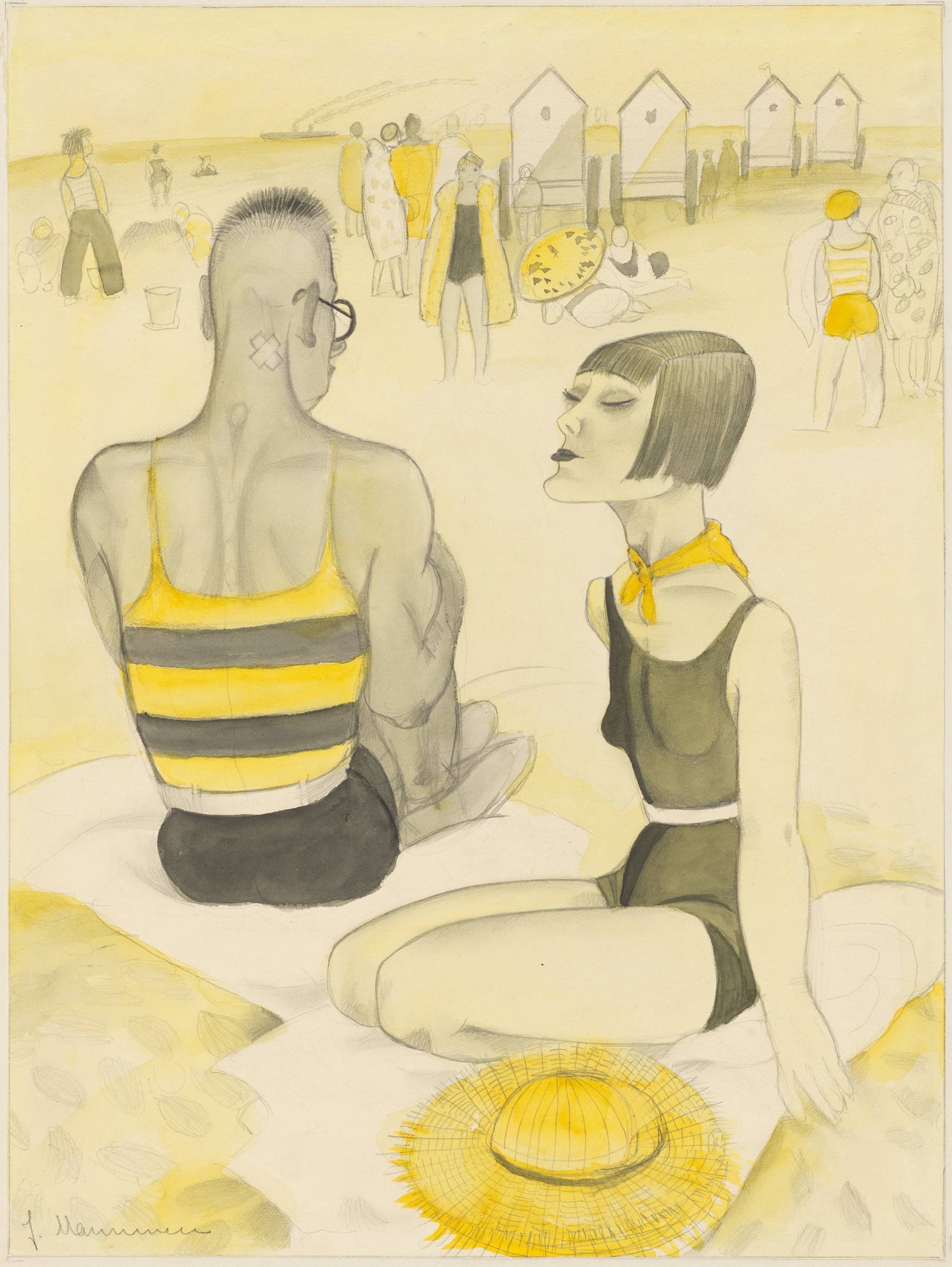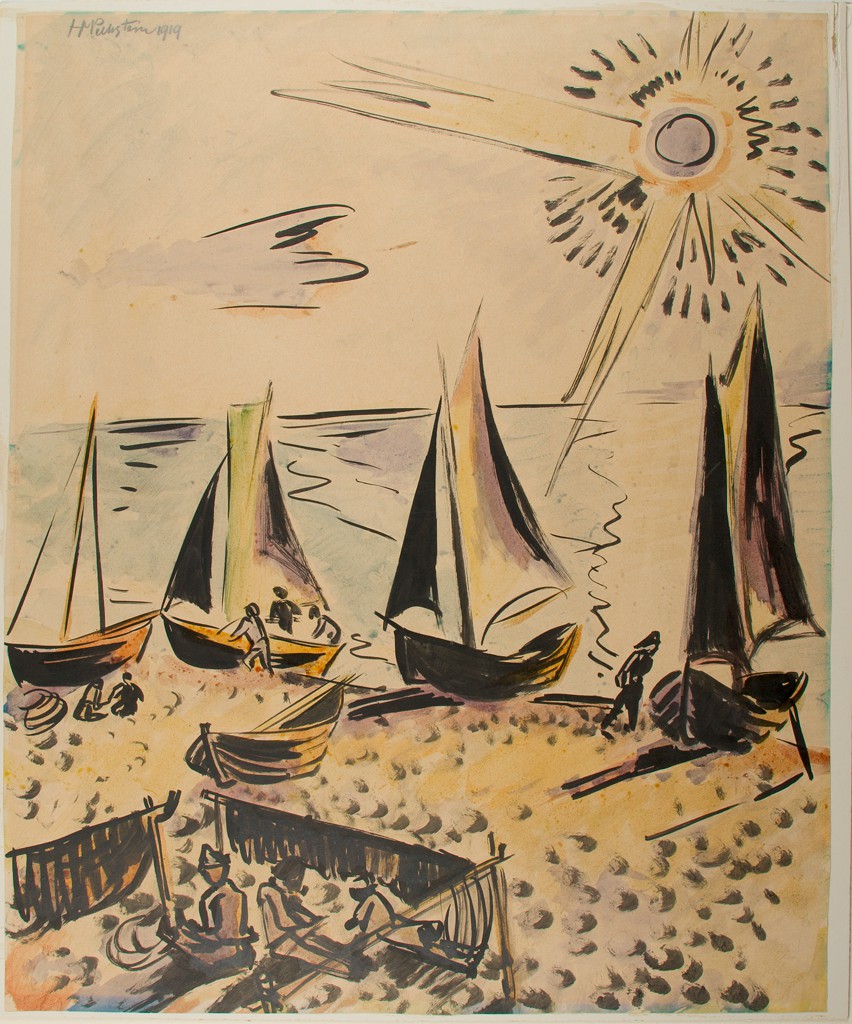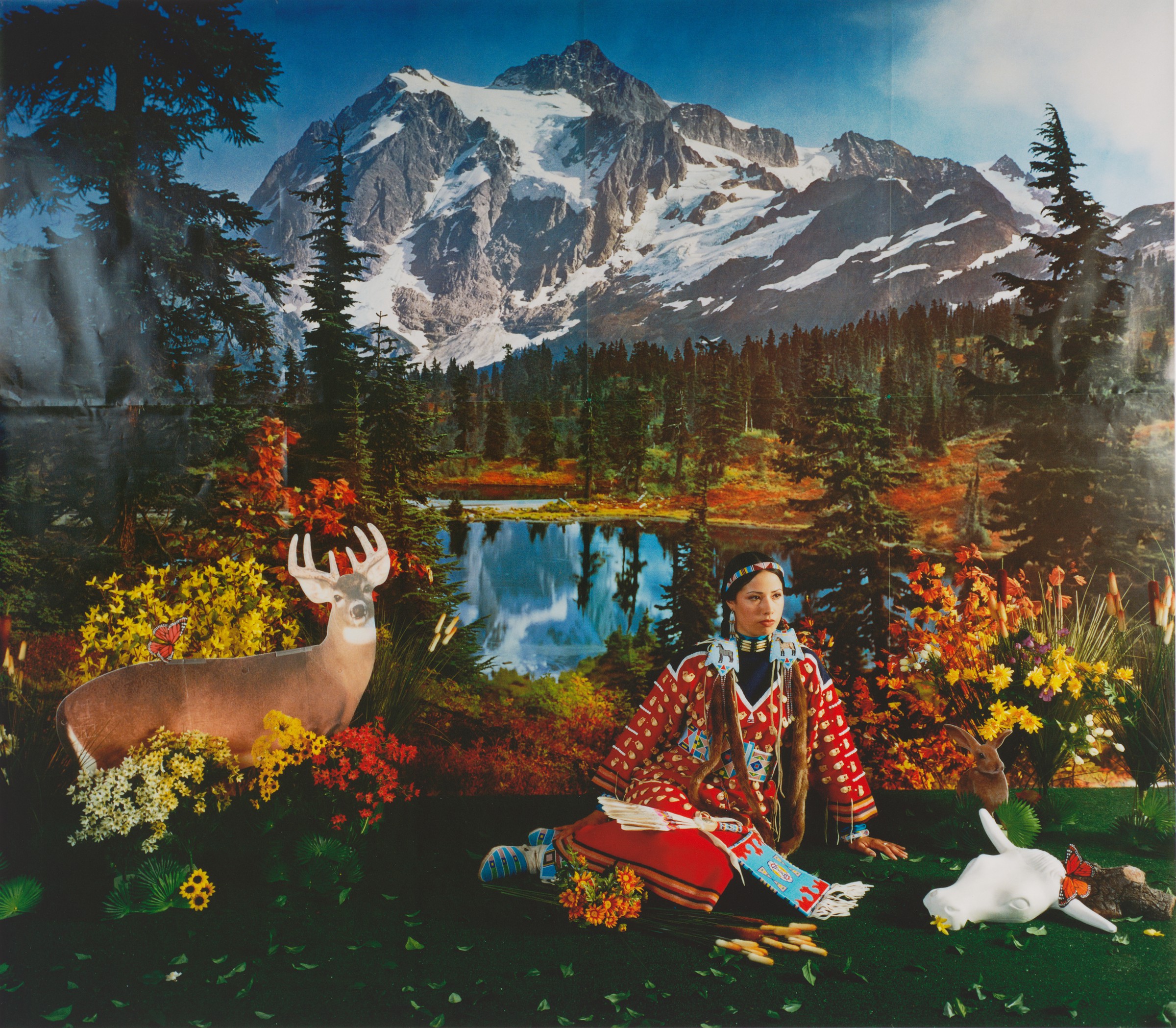In the words of American artist Harry Sternberg, summer offers prime opportunities for “painting light.” In the selections below, curators and curatorial fellows from the Division of Modern and Contemporary Art explore art inspired by the season.
Engaging with sites from the Rocky Mountains to New York City, from the Belgian seaside to the Baltic Coast, these works imagine summer as a time of light, color, and the outdoors—a chance for both pleasure and reflection.
Light and Heat
An American painter based in New York, Joan Snyder first became known for her “stroke paintings” in the 1970s. Summer Orange, seen above, combines different techniques of 20th-century abstract painting, from staining the canvas to applying pigment with spray cans. A penciled grid—the prototypical structure of modernist painting—organizes the patches of vibrant oranges, verdant greens, and warm golden hues that drip and extend beyond the regular lines. Vertical paint streaks, hardened in mid-drip, heighten the tension between order and disorder, evoking the work of Jackson Pollock. Even as their colors imply the brightness and heat of a summer day, Snyder’s paintings bear an intensity that has been described by critics as “drenched with personal pain, stammered with rage.” Like abstract expressionists, Snyder saw painting as an extension of personal experience; but she also saw it as bound up with feminist struggles for equality in political and cultural spheres. Painting allowed her to “speak visually,” as she phrased it, in a male-dominated world.
Mary Schneider Enriquez, Houghton Curator of Modern and Contemporary Art







